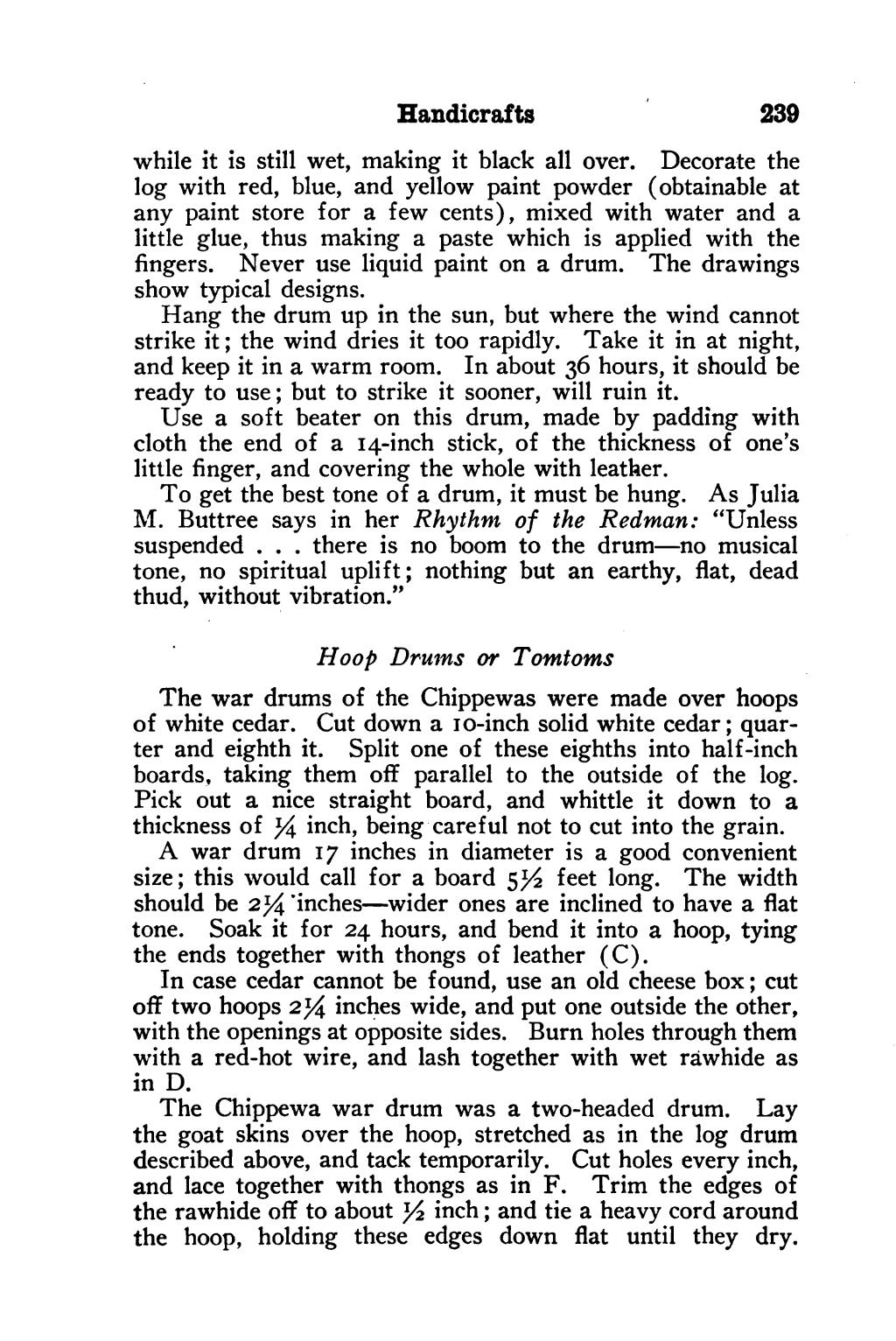Handicrafts | 239 while it is still wet, making it black all over. Decorate the log with red, blue, and yellow paint powder (obtainable at any paint store for a few cents), mixed with water and a little glue, thus making a paste which is applied with the fingers. Never use liquid paint on a drum. The drawings show typical designs. Hang the drum up in the sun, but where the wind cannot strike it; the wind dries it too rapidly. Take it in at night, and keep it in a warm room. In about 36 hours, it should be ready to use; but to strike it sooner, will ruin it. Use a soft beater on this drum, made by padding with cloth the end of a 14-inch stick, of the thickness of one’s little finger, and covering the whole with leather. To get the best tone of a drum, it must be hung. As Julia M. Buttree says in her Rhythm of the Redman: “Unless suspended . . . there is no boom to the drum—no musical tone, no spiritual uplift; nothing but an earthy, flat, dead thud, without vibration.” Hoop Drums or Tomtoms The war drums of the Chippewas were made over hoops of white cedar. Cut down a 10-inch solid white cedar ; quar- ter and eighth it. Split one of these eighths into half-inch boards, taking them off parallel to the outside of the log. Pick out a nice straight board, and whittle it down to a thickness of %4 inch, being careful not to cut into the grain. A war drum 17 inches in diameter is a good convenient size; this would call for a board 514 feet long. The width should be 214 ‘inches—wider ones are inclined to have a flat tone. Soak it for 24 hours, and bend it into a hoop, tying the ends together with thongs of leather (C). In case cedar cannot be found, use an old cheese box; cut off two hoops 2% inches wide, and put one outside the other, with the openings at opposite sides. Burn holes through them with a red-hot wire, and lash together with wet rawhide as in D. The Chippewa war drum was a two-headed drum. Lay the goat skins over the hoop, stretched as in the log drum described above, and tack temporarily. Cut holes every inch, and lace together with thongs as in F. Trim the edges of the rawhide off to about 4 inch; and tie a heavy cord around the hoop, holding these edges down flat until they dry.
Stránka:roll 1931.djvu/255
Z thewoodcraft.org
Tato stránka nebyla zkontrolována
